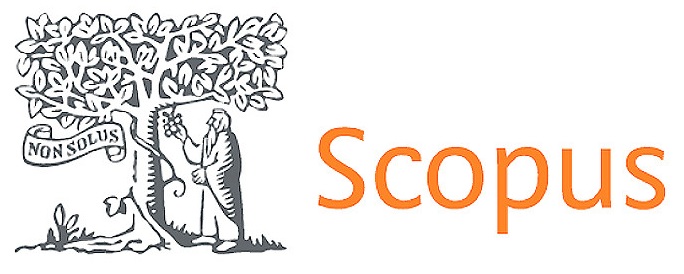Unlocking the healing spectrum: a narrative review fusing insights from internal medicine, dermatology, and plastic surgery
DOI:
https://doi.org/10.56294/saludcyt2023474Keywords:
Wound Healing, Internal Medicine, Dermatology, Plastic Surgery, Interdisciplinary Approach, Patient-Centered CareAbstract
Introduction: wound healing and tissue regeneration are complex processes influenced by systemic health, local wound environment, and surgical interventions. Despite advances in medical science, non-healing wounds and scarring remain significant clinical challenges.
Objective: The objective of this review is to synthesize the contributions of internal medicine, dermatology, and plastic surgery to wound healing and tissue regeneration, highlighting the importance of interdisciplinary approaches in optimizing wound care strategies and patient outcomes.
Methods: a comprehensive literature search was conducted in PubMed, Web of Science, and Scopus databases to identify relevant articles on wound healing and tissue regeneration, focusing on the contributions of internal medicine, dermatology, and plastic surgery. The review synthesizes evidence from these studies, emphasizing the importance of systemic health, skin physiology, and surgical interventions in optimizing wound healing and tissue regeneration.
Results: this review highlights the complementary roles of internal medicine, dermatology, and plastic surgery in addressing systemic health, skin physiology, and surgical interventions for wound healing and tissue regeneration. Internal medicine addresses systemic health factors that impact wound repair, dermatology focuses on skin physiology and pathology, and plastic surgery provides techniques for functional and aesthetic restoration of tissues. The review emphasizes the importance of interdisciplinary collaboration, patient-centered care, health disparities, and technological advancements in optimizing the healing spectrum.
Conclusions: unlocking the healing spectrum requires a comprehensive and interdisciplinary approach that integrates insights from internal medicine, dermatology, and plastic surgery. Addressing systemic health, skin physiology, and surgical interventions is crucial for wound healing and tissue regeneration
References
1. Galliot B, Crescenzi M, Jacinto A, Tajbakhsh S. Trends in tissue repair and regeneration. Development. 2017;144(3):357–64. DOI: https://doi.org/10.1242/dev.144279
2. Reuter H, Vogg MC, Serras F. Repair, regenerate and reconstruct: meeting the state-of-the-art. Development. 2019;146(9):dev176974. DOI: https://doi.org/10.1242/dev.176974
3. Lepez CO. El Valor Inestimable de la Rehabilitación Interdisciplinaria. Interdisciplinary Rehabilitation / Rehabilitacion Interdisciplinaria 2021;1:7–7. https://doi.org/10.56294/ri20217. DOI: https://doi.org/10.56294/ri20217
4. Almadani YH, Vorstenbosch J, Davison PG, Murphy AM. Wound Healing: A Comprehensive Review. Semin Plast Surg. 2021;35(3):141–4. DOI: https://doi.org/10.1055/s-0041-1731791
5. Freedman BR, Hwang C, Talbot S, Hibler B, Matoori S, Mooney DJ. Breakthrough treatments for accelerated wound healing. Science Advances. 2023;9(20):eade7007. https://doi.org/10.1126/sciadv.ade7007 DOI: https://doi.org/10.1126/sciadv.ade7007
6. Durieux N, Vandenput S, Pasleau F. [OCEBM levels of evidence system]. Rev Med Liege. 2013;68(12):644–9.
7. Aguayo-Albasini JL, Flores-Pastor B, Soria-Aledo V. Sistema GRADE: clasificación de la calidad de la evidencia y graduación de la fuerza de la recomendación. Cirugía Española. 2014;92(2):82–8. DOI: https://doi.org/10.1016/j.ciresp.2013.08.002
8. Ibrahim N ‘Izzah, Wong SK, Mohamed IN, Mohamed N, Chin KY, Ima-Nirwana S, et al. Wound Healing Properties of Selected Natural Products. International Journal of Environmental Research and Public Health. 2018;15(11):2360. DOI: https://doi.org/10.3390/ijerph15112360
9. Petrie JR, Guzik TJ, Touyz RM. Diabetes, Hypertension, and Cardiovascular Disease: Clinical Insights and Vascular Mechanisms. Canadian Journal of Cardiology. 2018;34(5):575–84. DOI: https://doi.org/10.1016/j.cjca.2017.12.005
10. Sears B, Saha AK. Dietary Control of Inflammation and Resolution. Frontiers in Nutrition. 2021;8. https://doi.org/10.3389/fnut.2021.709435 DOI: https://doi.org/10.3389/fnut.2021.709435
11. Fernández-Guarino M, Bacci S, Pérez González LA, Bermejo-Martínez M, Cecilia-Matilla A, Hernández-Bule ML. The Role of Physical Therapies in Wound Healing and Assisted Scarring. International Journal of Molecular Sciences. 2023;24(8):7487. DOI: https://doi.org/10.3390/ijms24087487
12. Monika P, Chandraprabha MN, Rangarajan A, Waiker PV, Chidambara Murthy KN. Challenges in Healing Wound: Role of Complementary and Alternative Medicine. Frontiers in Nutrition. 2022;8. https://doi.org/10.3389/fnut.2021.791899 DOI: https://doi.org/10.3389/fnut.2021.791899
13. Liu T, Li N, Yan Y qi, Liu Y, Xiong K, Liu Y, et al. Recent advances in the anti-aging effects of phytoestrogens on collagen, water content, and oxidative stress. Phytotherapy Research. 2020;34(3):435–47. Available from: https://doi.org/10.1002/ptr.6538 DOI: https://doi.org/10.1002/ptr.6538
14. Vitagliano T, Garieri P, Lascala L, Ferro Y, Doldo P, Pujia R, et al. Preparing Patients for Cosmetic Surgery and Aesthetic Procedures: Ensuring an Optimal Nutritional Status for Successful Results. Nutrients. 2023;15(2):352. DOI: https://doi.org/10.3390/nu15020352
15. Warren JL, Warren JS. The Case for Understanding Interdisciplinary Relationships in Health Care. Ochsner Journal. 2023;23(2):94–7. DOI: https://doi.org/10.31486/toj.22.0111
16. Krause-Jüttler G, Weitz J, Bork U. Interdisciplinary Collaborations in Digital Health Research: Mixed Methods Case Study. JMIR Human Factors. 2022;9(2):e36579. DOI: https://doi.org/10.2196/36579
17. Chavez NE. Bed bathing in adult critical care patients. Interdisciplinary Rehabilitation / Rehabilitacion Interdisciplinaria 2023;3:54–54. https://doi.org/10.56294/ri202354. DOI: https://doi.org/10.56294/ri202354
18. Gupta S, Poret AJ, Hashemi D, Eseonu A, Yu SH, D’Gama J, et al. Cutaneous Surgical Wounds Have Distinct Microbiomes from Intact Skin. Microbiology Spectrum. 2022;11(1):e03300-22. DOI: https://doi.org/10.1128/spectrum.03300-22
19. Jin MX, Kim SY, Miller LJ, Behari G, Correa R, Jin MX, et al. Telemedicine: Current Impact on the Future. Cureus. 2020;12(8). DOI: https://doi.org/10.7759/cureus.9891
20. Shawwa L. The Use of Telemedicine in Medical Education and Patient Care. Cureus. 2023;15(4). DOI: https://doi.org/10.7759/cureus.37766
21. Palmer RC, Ismond D, Rodriquez EJ, Kaufman JS. Social Determinants of Health: Future Directions for Health Disparities Research. Am J Public Health. 2019;109(S1):S70–1. DOI: https://doi.org/10.2105/AJPH.2019.304964
22. Kathawala MH, Ng WL, Liu D, Naing MW, Yeong WY, Spiller KL, et al. Healing of Chronic Wounds: An Update of Recent Developments and Future Possibilities. Tissue Eng Part B Rev. 2019;25(5):429–44. DOI: https://doi.org/10.1089/ten.teb.2019.0019
23. Edgman-Levitan S, Schoenbaum SC. Patient-centered care: achieving higher quality by designing care through the patient’s eyes. Isr J Health Policy Res. 2021; 10:21 DOI: https://doi.org/10.1186/s13584-021-00459-9
Published
Issue
Section
License
Copyright (c) 2023 Humberto Bravo Jiménez, Néstor Israel Quinapanta Castro, Lizbeth Denisse Casco Luzuriaga, Ximena Gabriela Gordón Villagrán, Daniela Stephanie Montenegro Salas, Sainly del Carmen Montiel Fleire, María de Jesús Mendoza López, Erik Manuel Cushpa Quinapanta, Angelitte Arlette Bravo Montes (Author)

This work is licensed under a Creative Commons Attribution 4.0 International License.
The article is distributed under the Creative Commons Attribution 4.0 License. Unless otherwise stated, associated published material is distributed under the same licence.



